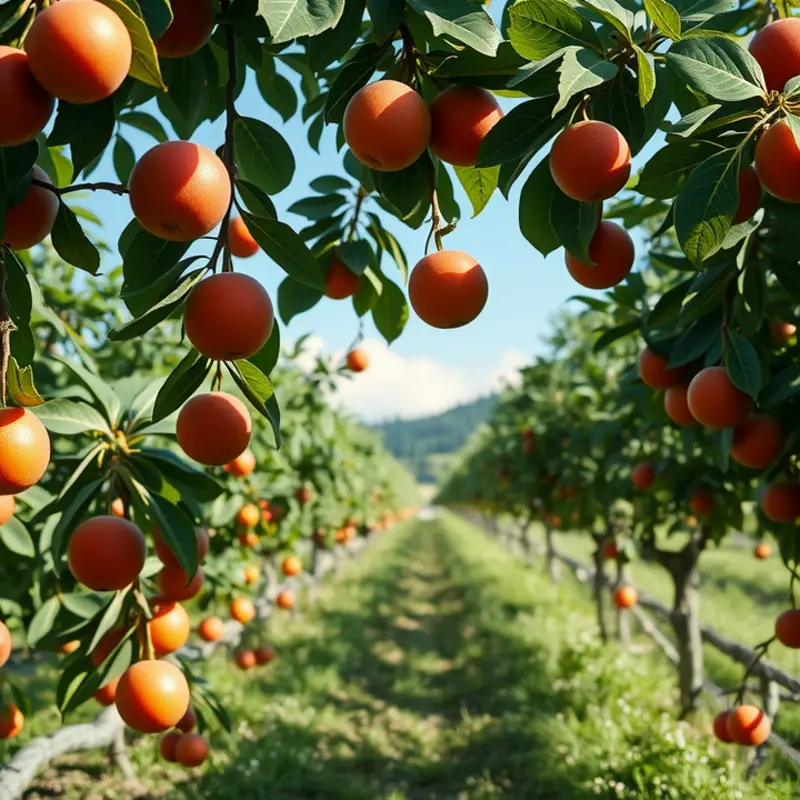The Pegan diet merges two popular nutrition philosophies: paleo and vegan. With a focus on whole foods and plant-based options, it encourages a healthy lifestyle while being mindful of sustainability. This article explores the principles of the Pegan diet, its benefits, and practical tips to help you integrate it into your daily routine.
The Core Principles of the Pegan Diet

The Pegan diet emerges from a thoughtful merge of paleo and vegan philosophies, aiming to harness the best of both worlds to create a balanced nutritional approach. At its core lies a commitment to whole foods and an emphasis on nutrient density, steering clear of highly processed items. This dedication supports not only individual health but also planetary sustainability.
Whole Foods Emphasis
Central to the Pegan diet is the encouragement to consume whole foods. This means prioritizing foods that are as close to their natural state as possible. Whole foods deliver a spectrum of nutrients without the additives and preservatives found in processed products. This principle draws heavily from the paleo diet, which advocates eating like our ancestors.
Incorporating Plant Power
While the Pegan diet borrows ideas from the paleo framework, it incorporates the plant-centric philosophy of veganism. A significant part of the Pegan plate consists of fruits and vegetables which are pivotal for obtaining fiber, antioxidants, and phytonutrients. By focusing on a broad spectrum of colors in produce, the diet ensures a diverse intake of nutrients, enhancing overall health.
Organic and Sustainable Choices
The diet underscores the importance of choosing organic produce whenever possible. Organic farming practices nurture soil health and are typically kinder to the environment, reducing the need for excessive pesticides and artificial fertilizers. Beyond personal health benefits, this approach aligns with a commitment to sustainability. The focus on food source transparency also encourages supporting local and sustainable farming operations. For further insights on eco-friendly food practices, explore eco-smart kitchen storage.
Balancing Protein Sources
Unlike strict veganism, the Pegan diet includes animal products as valuable sources of protein, provided they are sustainably and ethically sourced. This might involve grass-fed meats, pasture-raised poultry, or sustainably-caught fish. The emphasis remains on moderation and quality, ensuring that animal consumables do not dominate the meal plan.
Limiting Processed Foods and Refined Sugars
Processed foods, characterized by a high degree of refinement and often laden with sugar, are minimized in the Pegan diet. These items can cause inflammation and disrupt metabolic health. Instead, natural sweeteners and whole-food snacks are preferred, facilitating steadier energy levels and better metabolic outcomes.
Grain and Dairy Considerations
While vegan diets typically embrace grains, the Pegan diet limits their consumption, especially gluten-containing varieties. This practice is informed by the paleo perspective that suggests some people may experience inflammation or digestive issues due to modern grain cultivation. Dairy is approached in much the same way; it’s not excluded, but the emphasis is on understanding body’s response and seeking alternatives such as nut milks.
In conclusion, the Pegan diet provides a flexible framework, celebrating the variety and richness offered by a fusion of paleo and vegan principles. Its considerations for whole foods, sustainability, and careful sourcing create a holistic approach to nutrition that satisfies both personal health needs and global ecological responsibilities.
Incorporating the Pegan Diet into Daily Life

Transitioning to the Pegan diet, a balanced blend of Paleo and vegan eating, can initially seem daunting. However, the shift can be simplified with practical strategies and thoughtful preparation. To begin, recognize the core of the Pegan diet: minimizing processed foods and focusing on whole, nutrient-rich options. Meal planning plays a pivotal role in seamlessly integrating these principles into everyday life.
Start your Pegan journey by enhancing your grocery shopping habits. Prioritize fresh produce, especially vegetables that form the diet’s foundation. Visit local farmers’ markets when possible, which are excellent sources of fresh, organic produce. When selecting meats and fish, opt for grass-fed, pasture-raised, or wild-caught varieties. This emphasis ensures quality protein intake without compromising Pegan ethics. Given the need to avoid dairy, explore plant-based milk alternatives, keeping an eye on added ingredients to maintain Pegan standards. For guidance on non-dairy options, our guide to non-dairy probiotics can be a useful resource.
Embrace meal prepping as an integral part of maintaining the Pegan lifestyle. Batch cooking offers convenience and ensures you have Pegan-friendly meals ready throughout the week. Focus on versatile ingredients like quinoa, lentils, and a variety of beans. These ingredients not only add protein but also marry well with numerous vegetables and herbs, allowing for diverse meals without repetitive flavors. Use vibrant spices instead of salt to amplify taste, promoting health without compromising flavor.
Dining out on a Pegan diet requires a strategic approach. Research restaurant menus online beforehand. Look for places offering farm-to-table dining or those that accommodate Paleo or vegan diets, as they often can be tailored to suit Pegan options. Don’t hesitate to request modifications such as dressing on the side or substituting grains with salad to ensure your meal aligns with Pegan principles.
Experiment with Pegan-approved breakfasts, such as vegetable omelets using coconut oil and almond flour pancakes topped with fresh berries. These satisfying options provide a nutrient-rich start to the day. Lunches could consist of hearty salads with a variety of greens, nuts, seeds, and a simple lemon-olive oil dressing. For dinners, consider dishes like roasted vegetables with grilled salmon or a cauliflower stir-fry with tofu, ensuring a balance of flavors and nutrients.
Incorporating the Pegan diet into daily life is a rewarding commitment to health and sustainability. It encourages mindful eating and respects ecological harmony. As you delve deeper into this lifestyle, patience and creativity can transform your relationship with food, ushering in both health benefits and a sense of culinary adventure.
Final words
The Pegan diet offers a refreshing approach to nutrition by combining the health benefits of plant-based eating with the principles of whole food consumption. Its emphasis on sustainability and mindful eating resonates with those who want to improve their health without compromising the planet. By following the guidelines presented in this article, you can start your journey on the Pegan diet and discover how it can support your health goals while nourishing the Earth.








